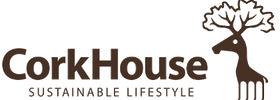
Encaustic (adj): using pigments mixed with hot wax burned in as an inlay. It comes from the 16th-century Greek word (enkaustikos), meaning “to heat or burn in.”
February has been pegged as one of the coldest and bleakest months of the year. However, some artists are defying this month’s reputation and embracing it as an opportunity to create something warm and wonderful - something that feeds the senses as well as the soul.
One such creative is Baltimore-based artist Christine Sajecki of Roots Up Gallery. Sajecki will be presenting a unique hands-on workshop at CorkHouse Savannah this February 5-6, 2022.
Sajecki notes her discovery of encaustic came from a desire to get “more body in the paint – more atmosphere, texture and space” than she could achieve by working exclusively as an oil painter. She finds working with encaustic exciting because she is able to endlessly manipulate and change the medium once it cools - encaustic cools instantly, unlike oil paint, which can take weeks to dry.
“Experimenting with different additives through trial and error, I started my journey in encaustic and just never turned back.“

I spoke with Leslie Lovell, Director of Roots Up Gallery, who can attest to the unique sculptural qualities of encaustic. “You can carve into it, and you can add colors, image transfers, and other materials like twigs, paper, leaves. There are many layers of paint that you can manipulate and build on. It creates an ethereal, even spiritual feel and experience.”
Sajecki adds, “The experience for the artist and art audience is also very sensual; it’s almost like cooking. People get really close to the painting sometimes and smell it—They often ask me if I paint it and then put wax on it. They don’t understand at first that the wax is the paint.”
“The experience for the artist and art audience is also very sensual; it’s almost like cooking.”
Sajecki says, unlike some other media, encaustic is not something a beginner should try on their own at home. While there is no inherent danger to working in encaustic, common sense must prevail because you are dealing with torches and fire. However, there are no harmful fumes when kept at low heat, and the pigments won’t soak in your skin. That’s why a workshop is the ideal setting for getting to know encaustic.
“I’ve seen all kinds of people succeed with it. Encaustic is so different from other kinds of painting; it’s almost better to come in without a lot of experience with other media. It’s very Zen. There are no rights or wrongs, and the medium is always open to change. Anyone has an equal chance of doing something great with encaustic. “
“The flexibility to keep manipulating the medium and adding colors and layers— the intrinsic qualities of the paint itself are what keeps me coming back... It’s almost as if you’re working on a living thing.” They are certainly living and atmospheric paintings, beautifully abstract.
But when I asked about her next step, Sajecki revealed that she missed representational painting. “I started out as a figurative painter, so I’d like to get back into more figurative work again.“ Encaustic people and maybe even encaustic dogs are in the works!
Christine Sajecki’s ‘Encaustic Workshop’ is a special event held Feb 5 and 6, 2022, presented by Roots Up Gallery at CorkHouse, 230 W Bay Street in downtown Savannah.
Sajecki’s workshop will be an opportunity to see, feel and create a universe of art that feeds the soul. If you are interested in participating in a future encaustic workshop with Sajecki, please email community@jelinek.com.


